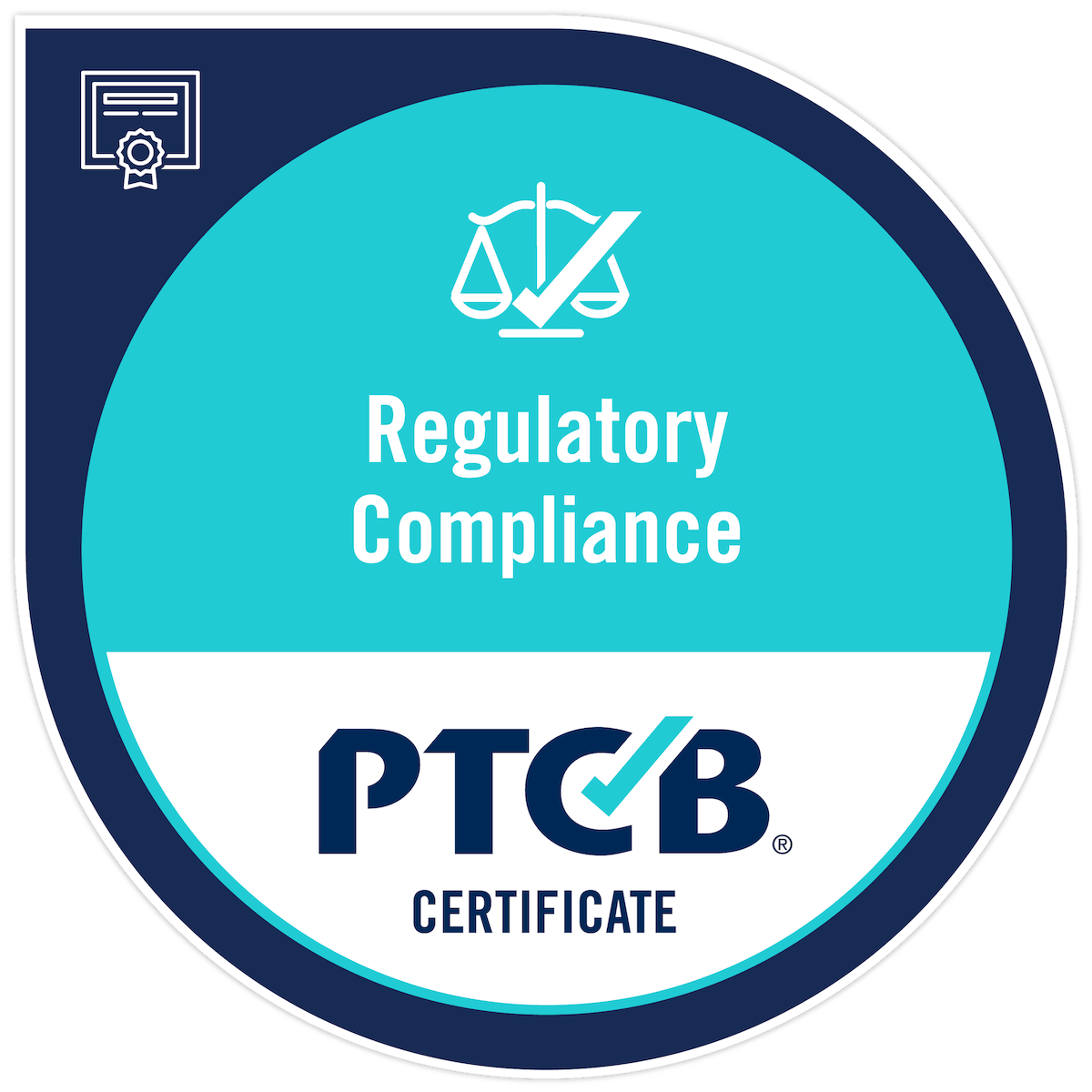| Laws, Regulations, and Guidelines (37%) |
| Roles of various regulatory bodies |
| Use of USP Standards pertaining to Regulatory Compliance (e.g., appropriate application and interpretation of USP Chapters) |
| Federal requirements for pharmacy (e.g., non-discrimination; fraud, waste, and abuse; OIG exclusion list; HIPAA; SAMHSA; Nuclear Regulatory Commission (NRC)) |
| Environmental Protection Agency's (EPA) hazardous waste management in the pharmacy |
| Federal Controlled Substances Act |
| Federal Food, Drug, and Cosmetic Act (FDCA) |
| Drug Quality and Security Act (DQSA)—Title I Compounding Quality Act (CQA), Title II Drug Supply Chain Security Act (DSCSA) |
| Accreditation Standards (e.g., types of accreditations, elements of accreditation, reasons for accreditation) |
| Legal Requirements and Practice Standards (37%) |
| Regulatory and accreditation-related terminology (e.g., statute, law, regulation, standard, code, certification, certificate, licensure, registration) |
| Basic principles that serve as the foundation for pharmacy laws and pharmacy ethics (e.g., evolution of the FD&C Act, other key legislation that has shaped pharmacy practice) |
| Federal requirements (e.g., DEA, FDA) for controlled substances (i.e., receiving, storing, ordering, labeling, dispensing, reverse distribution, take back programs, and loss or theft of) |
| Federal requirements for handling and disposal of non-hazardous, hazardous, and pharmaceutical substances and waste |
| Federal requirements for restricted drug programs and related medication processing (e.g., pseudoephedrine, Risk Evaluation and Mitigation Strategies [REMS]) |
| Laws and/or regulations regarding compliance and auditing functions |
| Federal requirements pertaining to the medication dispensing process |
| Federal requirements pertaining to personnel competency |
| Federal requirements pertaining to compounding sterile preparations (CSP) |
| Federal requirements pertaining to non-sterile compounding |
| Licensing and reporting requirements for personnel and facility |
| Patient Safety and Quality Assurance Strategies (26%) |
| Elements of compliance programs (e.g., Just Culture, continuous quality improvement (CQI), quality assurance (QA), patient safety organization (PSO)) |
| Methods or techniques to systematically improve accuracy (e.g., barcode scanning, Failure Mode and Effects Analysis (FMEA), Root Cause Analysis (RCA)) |
| Cause and impact of medication dispensing errors (e.g., abnormal doses, early refill, incorrect quantity, incorrect strength, incorrect patient, incorrect drug, incorrect route of administration, incorrect directions, wrong timing, missing dose, misinterpretation of drug concentration) |
| Cause and impact of other types of quality-related events (e.g., incomplete counseling, patient language barrier, adverse events) |
| Medication storage requirements (e.g., refrigeration, freezing) |
| Rules, policies and regulations related to the disposal of pharmaceutical drugs (e.g., prescription drug take back programs; proper medication destruction) |
| Reporting of medication errors and quality-related events (e.g., internal reporting, MedWatch, VAERS, Board of Pharmacy) |
| Institute for Safe Medication Practices (ISMP) best practices (e.g., List of High-Alert Medications; Targeted Medication Safety Best Practices for Hospitals; Safe Preparation of Compounded Sterile Preparations; look-alike/sound-alike medications) |
